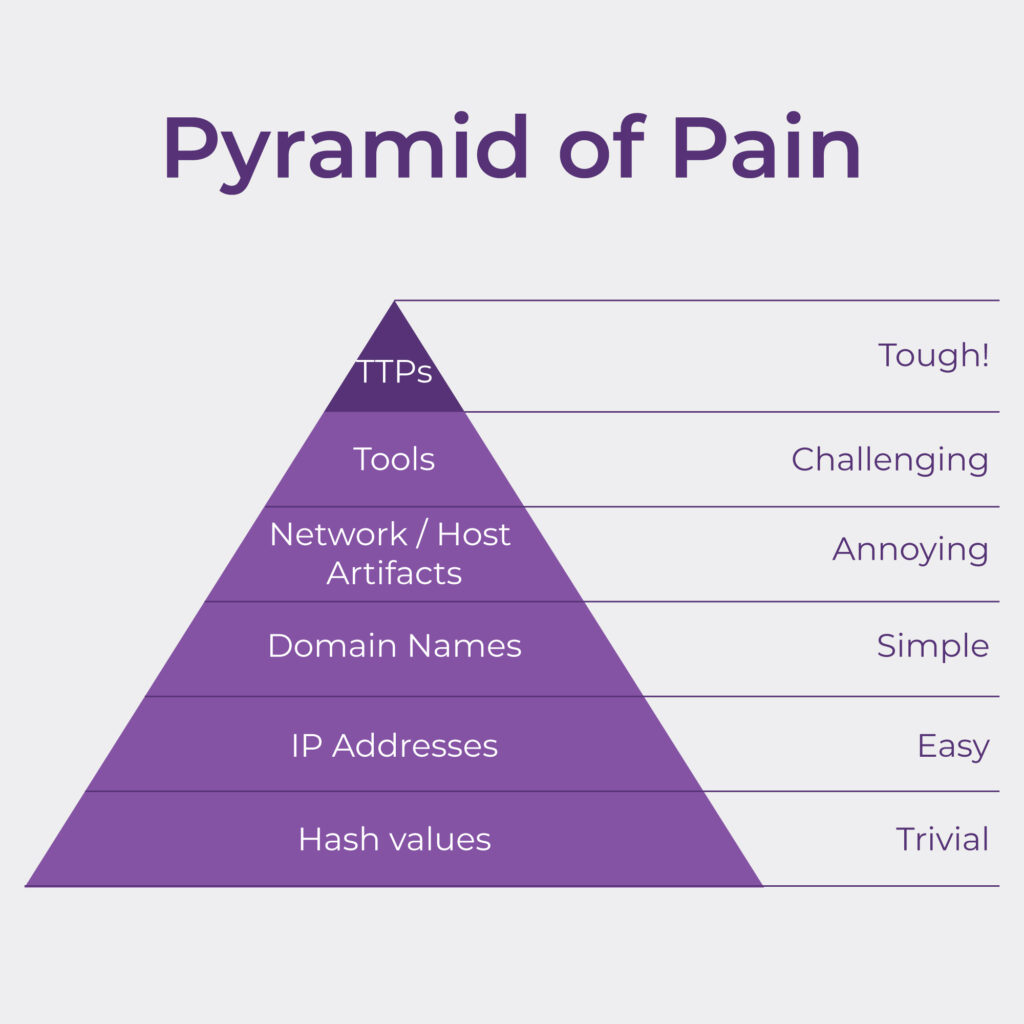
Pyramid of Pain is a cybersecurity concept to illustrate the hierarchy of indicators of compromise (IOCs) based on their level of difficulty and effectiveness for an attacker. The concept was introduced by cybersecurity expert David J. Bianco.
Pyramid of Pain holds significance for both cybersecurity specialists and business leaders in these ways:
1️⃣ Prioritization of defense measures: this helps specialists focusing on the indicators that are more difficult for attackers to change or modify, thereby making it harder for attackers to operate within their systems and detect and respond to threats more effectively.
2️⃣ Enhanced detection and response: cybersecurity specialists build more robust detection and response strategies by zeroing in on higher-level indicators. They can develop more sophisticated algorithms, security controls, and monitoring systems to identify and mitigate threats.
3️⃣ Strategic decision making: Pyramid of Pain offers business leaders insights into the motivations, goals, and strategies of attackers. This knowledge can inform strategic decision making, such as resource allocation, investments in security technologies, and the development of proactive security measures.
4️⃣ Risk management and compliance: The Pyramid of Pain helps in identifying and managing cybersecurity risks. By understanding the significance of different indicators, specialists can focus on mitigating the risks associated with higher-level indicators that are more difficult for attackers to modify. Furthermore, the concept aligns with various cybersecurity frameworks and compliance requirements, assisting enterprises in meeting regulatory standards.
Reference:
Bianco, D. J. (2014, January 17). The Pyramid of Pain. Enterprise Detection & Response. https://detect-respond.blogspot.com/2013/03/the-pyramid-of-pain.html
Leave a Reply